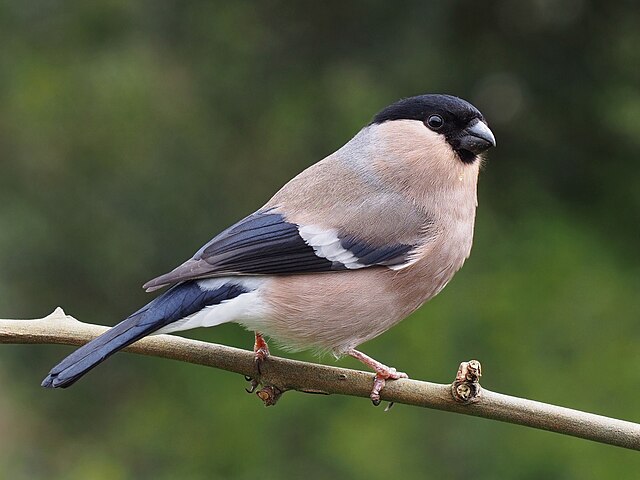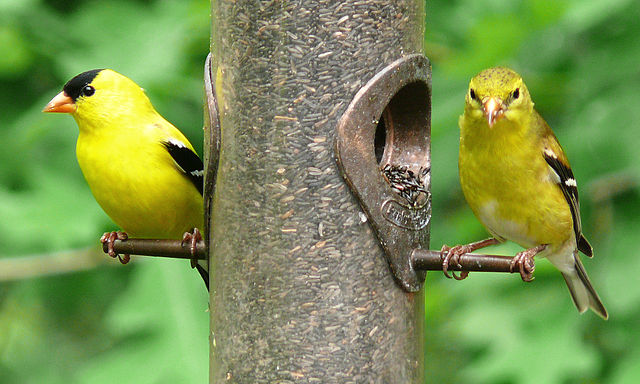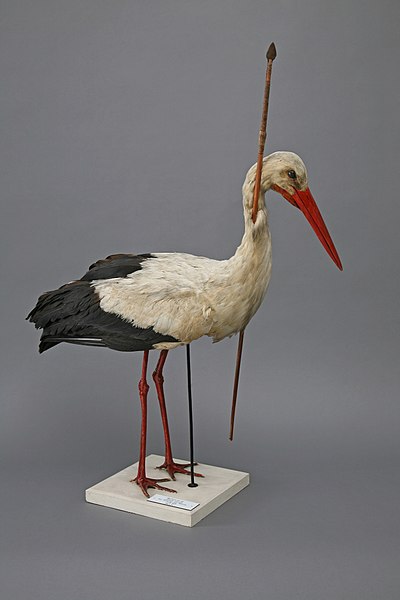The true finches are small to medium-sized passerine birds in the family Fringillidae. Finches generally have stout conical bills adapted for eating seeds and nuts and often have colourful plumage. They occupy a great range of habitats where they are usually resident and do not migrate. They have a worldwide native distribution except for Australia and the polar regions. The family Fringillidae contains more than two hundred species divided into fifty genera. It includes the canaries, siskins, redpolls, serins, grosbeaks and euphonias, as well as the morphologically divergent Hawaiian honeycreepers.
Image: Pyrrhula pyrrhula female 2
Image: Bullfinch male
Euphonias, like this thick-billed euphonia, were once treated as tanagers instead of finches.
American goldfinch (Spinus tristis) male (left) and female (right) in Johnston County, North Carolina, USA
Bird migration is the regular seasonal movement, often north and south, between breeding and wintering grounds. Many species of bird migrate, typically by flying. Migration carries high costs in predation and mortality, and is driven primarily by the availability of food. It occurs mainly in the Northern Hemisphere.
A flock of barnacle geese during autumn migration
Minoan fresco of swallows in springtime at Akrotiri, c. 1500 BC
The Rostocker Pfeilstorch, found in 1822, demonstrated that birds migrated rather than hibernating or changing form in winter.
Flocks of birds assembling before migration southwards (probably common starling)








